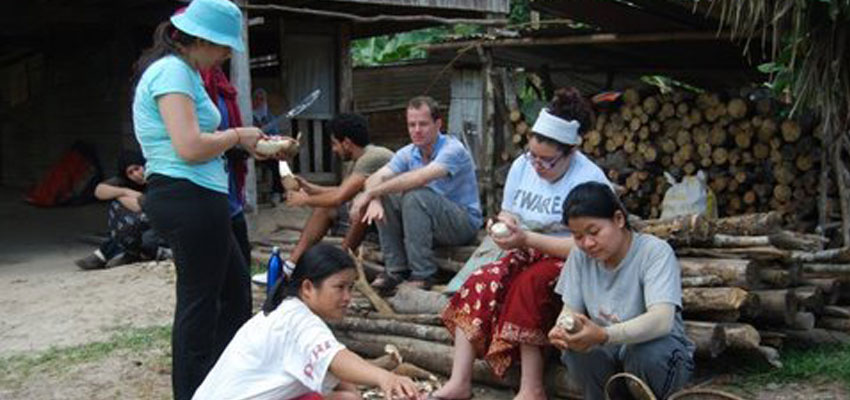
After finally collecting some pictures from the trip, here's an update on the Masdar D-Lab Energy trip to Borneo!
Fifteen people (13 students and 2 professors) traveled to Kg. Buayan, and Kg. Terian, two remote villages in Sabah, the Malaysian part of Borneo.
It was the first time on an airplane for 1 person in our class.
It was the first time hiking for 7 people.
It was the first time to Borneo for 12 people.
After a flight across the ocean and hours driving on the steepest, bumpiest, nastiest dirt road you've ever seen, we arrived in Kg. Terian, one of the indigenous communities that our community partner PACOS works with. The dirt road was recently extended to Terian in July 2009, but before that it was accessible only by hiking through the jungle.
On the road to Terian:
Students stayed in homestays, visited the schools, the solar installation, and micro-hydro plant. We learned a lot from the community including how to catch fish with our bare hands. (Okay, I don't think any one on our team actually managed to catch a fish, but Evelyn and Hilda, our hosts and instructors, were very good at it.)
Here's some of the D-Lab crew helping Evelyn and Hilda prepare some tapioca that we harvested together.

Eating lunch together.

Next, we ventured farther into the jungle and hiked for 4 hours to reach Kg. Buayan, which still does not have road access and can only be reached by foot. (Lucky for us, it was very dry. We didn't see a single leech, although we'd been prepared to deal with lots of them.)
On the way to Buayan, almost there...

In Buayan, we had the opportunity to learn more about the sophisicated system of crop rotation used by the farmers, and to visit the larger micro-hydro plant. Here's some of the D-Lab crew with our colleagues in Buayan:

PACOS has worked to help install the micro-hydro systems in both Terian and Buayan. Unfortunately, Sabah is experiencing an especially dry season. (The locals kept making comments about how dry it was, but for a class of students from the UAE desert, it sure seemed really green.) Even though there is still water flowing into the micro-hydro systems, it isn't sufficient to support the demand of the villages. They'd tried to run the plants at a lower capacity, but the system kept tripping, so they gave up and decided to wait for the rainy season. In the mean time, many households are using diesel generators for their electricity. Transporting diesel to these locations is difficult and expensive, especially Kg. Buayan, where fuel must be carried in on foot.
Unfortunately, there's an even larger problem facing Kg. Terian and Kg. Buayan - the Malaysian government wants to install a dam that will displace 9 villages and nearly 1,400 indigenous Dusun people. You can read more about it by clicking here. The dam was clearly the top concern of every person we talked to. PACOS is helping to organize these communities and take action against the dam and the displacement.
It was very frustrating to learn about such healthy, thriving communities, only to learn that they are in danger of being destroyed by the Kaiduan Dam. Even more frustrating is that solving this problem is far outside the reach of our D-Lab class. It is a stunning case study on how the technical problems are the easiest, and it's usually the social, political, and implementation problems that are much tougher to solve.
For now, we're waiting for word on what will happen to our partner communities and supporting them the best we can. There's a petition you can sign at this site to show your support for these communities.
In the meantime, Masdar students are also looking at cost-effective water storage and demand side management options to help match the energy resource and demand during the dry season for Buayan and Terian and similar communities that PACOS works with that also have micro-hydro problems. And of course we're hoping and praying that it will be possible to try out some of these ideas in Buayan and Terian!

